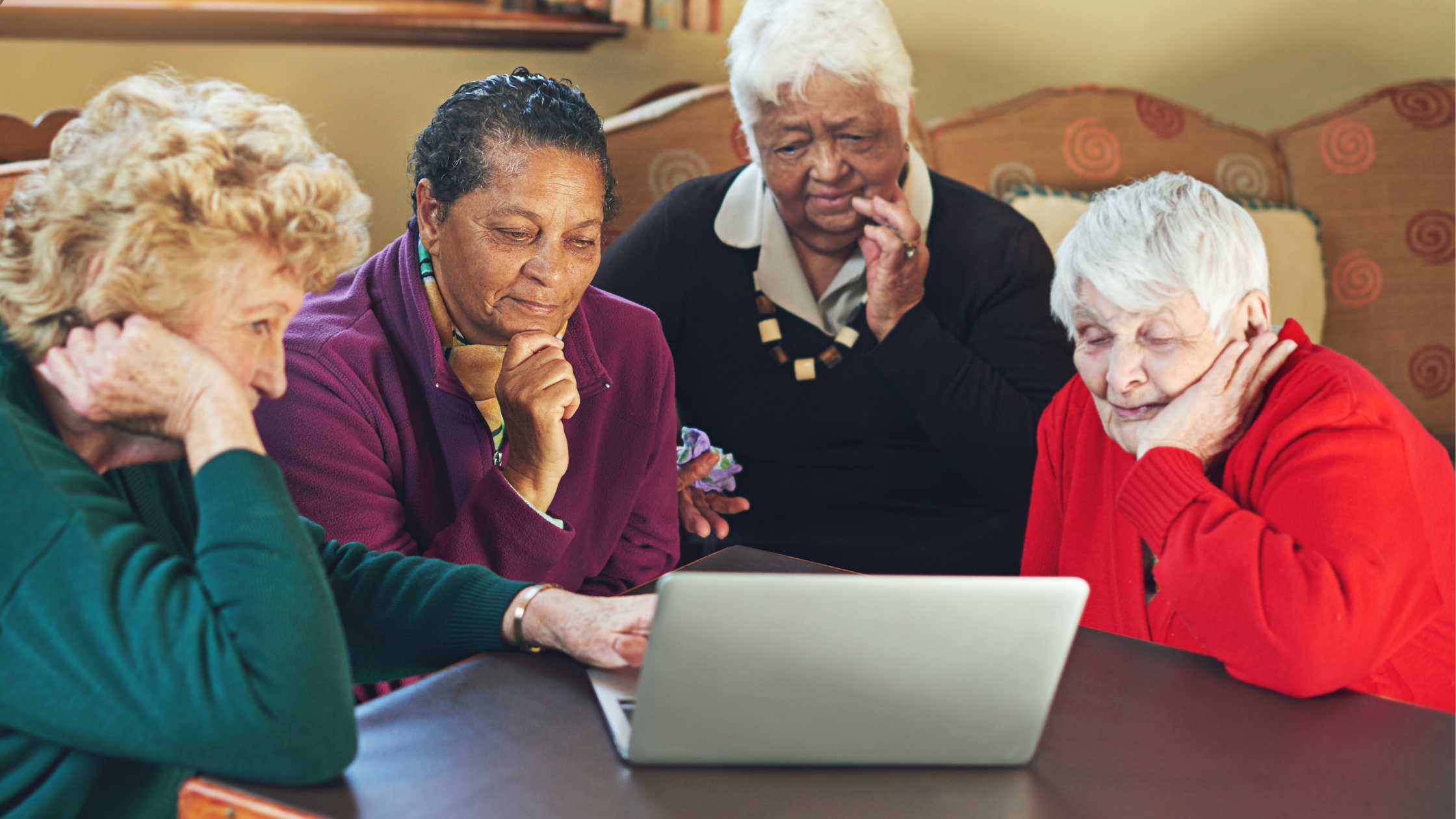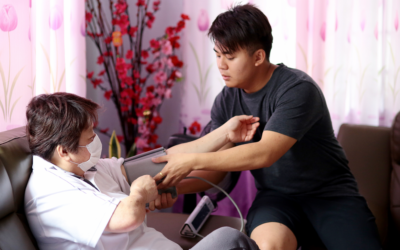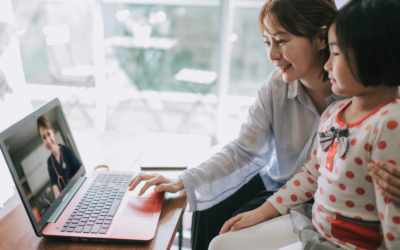Which would you prefer?
- Staying home as you get older.
- Moving to a nursing home or assisted living facility.
If you chose option A, you are like 75% of adults over 50. According to an AARP survey, 3 out of 4 people want to say in their home as they age. Sadly, few think they can because of needing help with things like getting around.
This is where technology could step in to fill the gap. Tools like smart watches that detect when you fall and companion robots remind you when to take medications could help more people stay home as they age.
On top of this, health technology companies realize older adults are a growing market, and are starting to pay attention to their needs. But technology can only help older adults if they actually use it.

Age gracefully… with health technology:
The opportunity is huge for health technology to help people stay independent as they age. And the idea that seniors do not use technology is false:
- More than 70% use the internet.
- More than 50% own a smartphone.
- This age group spends half their leisure time using technology.
In fact, there is a whole new industry growing around the idea of helping older adults stay independent. Called active aging, it includes safety, remote care, and wellness technology. This market is expected to grow to $30 billion in the next few years, which is part of why health technology companies are now chasing older adults.

Seniors want to stay home as they age. This is called aging in place, and many older people prefer it to expensive (and depressing) nursing homes.
So, what is the problem? Well, unlike using technology to order food or catch up on social media, many older adults feel frustrated and lack confidence about using technology for their health.

Why some older adults hesitate to adopt health technology:
There are many older adults who do use health technology and enjoy the convenience. But for those who have not warmed up to it, there are several reasons why.
Issue #1: Design:
Many of the new technologies were designed without input from older adults. This leads to issues with seniors being able to use it. Sleek new products that try to hide things like buttons may look great. But that can cause some seniors to feel frustrated trying to get them to work.
Issue #2: Too much technical language:
Older adults also may not be familiar with some of the terms used in health technology. Keep in mind there are a number of retired people who left the workforce before smartphones were widely used.

Issue #3: Privacy:
Privacy is important to seniors. Researchers at University of California – San Diego surveyed older adults about health technology. They found older adults are willing to share health data, but want to know how their data will be used.
Older adults also want to get helpful insights about their health in return for sharing their information. This is good news because it means older people want to use health technology, but it has to have clear benefits for them.

Tips for getting more older adults to adopt health technology:
There are ways to get more older adults to adopt health technology. Here are a few tips:
Tip #1: Start with familiar stuff:
Think about what the older adult is familiar with and start there. We bought my father-in-law a regular remote control with buttons and connected it to the AppleTV. He was familiar with the old remote design, so this made it usable for him.
While services like Teledoc for telehealth may be convenient, many older people do not like the idea of seeing doctors they do not know. If they are used to seeing a specific doctor, see if that doctor or someone in the same office does telemedicine.
Being connected to a familiar office can help older adults feel more comfortable.
Tip #2: Emphasize benefits:
The goal here is to get older adults motivated to use health technology. Think about how you can fold in their interests and keep their attention.
Do they like golf? Show them how a smartwatch can track their steps and heart rate while they are golfing. Do they want to know if they can still have a glass of wine with a new medication? Show them how to send questions to their provider through the patient portal instead of calling.

Teach them how to do things like look up reviews of their doctors so they can see what other patients are saying, or get their prescriptions cheaper through apps like GoodRx.
Keep things fun, friendly, and relaxed while showing how the technology can work for them.
Tip #3: Avoid jargon:
I hate it when people make something simple sound more complicated than it is. They are just doing it to feel smart. Keep language simple and stick to terms older adults already know.
That may mean saying ‘video visit’ instead of ‘telehealth,’ or ‘watch’ instead of ‘wearable.’
Tip #4: Let them do things hands on instead of doing for them:
The best way to learn is by doing. Encourage older adults to use the technology themselves even if you know you could do it faster.
It may also help for them to take notes on pen and paper. This is familiar to them, and writing things down helps with memory.
Tip #5: Build confidence:
One of the biggest barriers for seniors is not feeling confident they can use the technology. When they manage to do something, praise them for it. Let them know they are making progress.
Also make sure to teach them how to keep their information safe since privacy is a big concern. They will feel more confident trying technology they know is safe.

Key Takeaways:
Health technology could be a game changer for people who want to stay home as they age. But many older people do not feel comfortable using it. There are some things you can do to help the seniors in your life adapt:
- Start with what is familiar – get a remote control with buttons if you have to.
- Show the benefits – people are motivated when they see what is in it for them.
- Get rid of technical jargon – keep the language simple and it will seem easy.
- Teach instead of doing – let the seniors in your life get their hands dirty with the technology.
- Build confidence – we all like that gold star sticker for good performance.’
There are organizations that teach general technology to older adults. AARP Online Learning offers online classes on everything from how to safely use ride-sharing apps during COVID-19 to how to start a podcast.
Older adults want to be tech savvy and independent – these tips can help them get there.






I have worked within homecare before and reading all of this really made me realize how much of my work could be done if technology would just catch up and would be more accessible to the public. If I’m being honest, one of my dreams has been to move into a nursing home with all my friends and play video games and grow old together but I’m pretty sure that isn’t happening. My 94 old great-grandmother uses an Ipad we bought for her so she could still facetime and be in contact with me and my family all the way in Europe. I learned a lot about the different ways to ease the elderly into technologies such as using familiar terms and using technologies that they already know how to use and try and teach them.